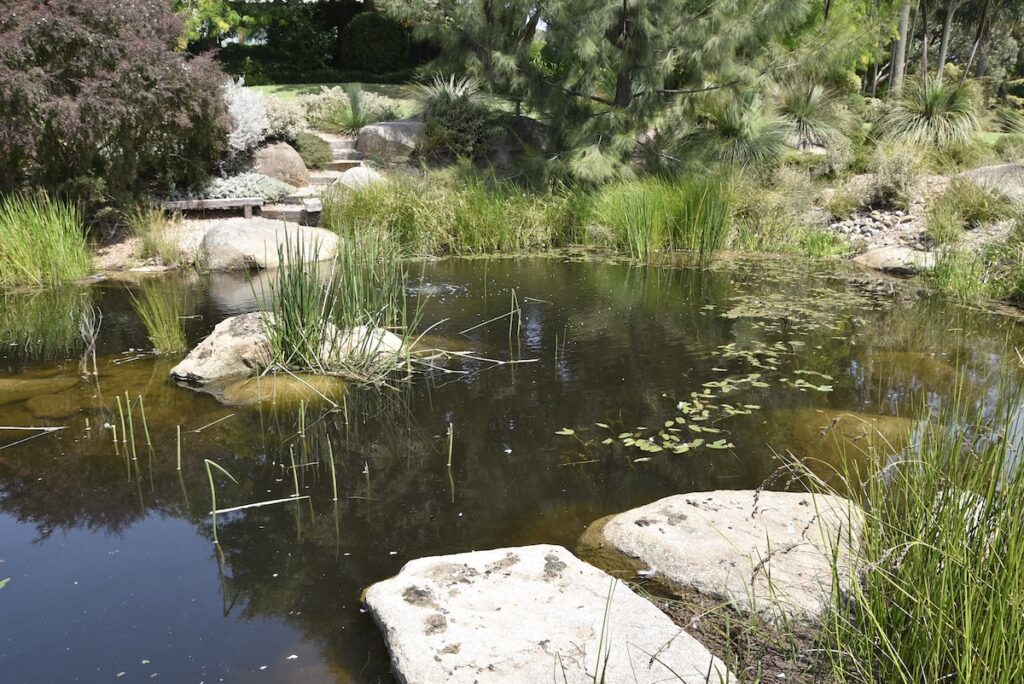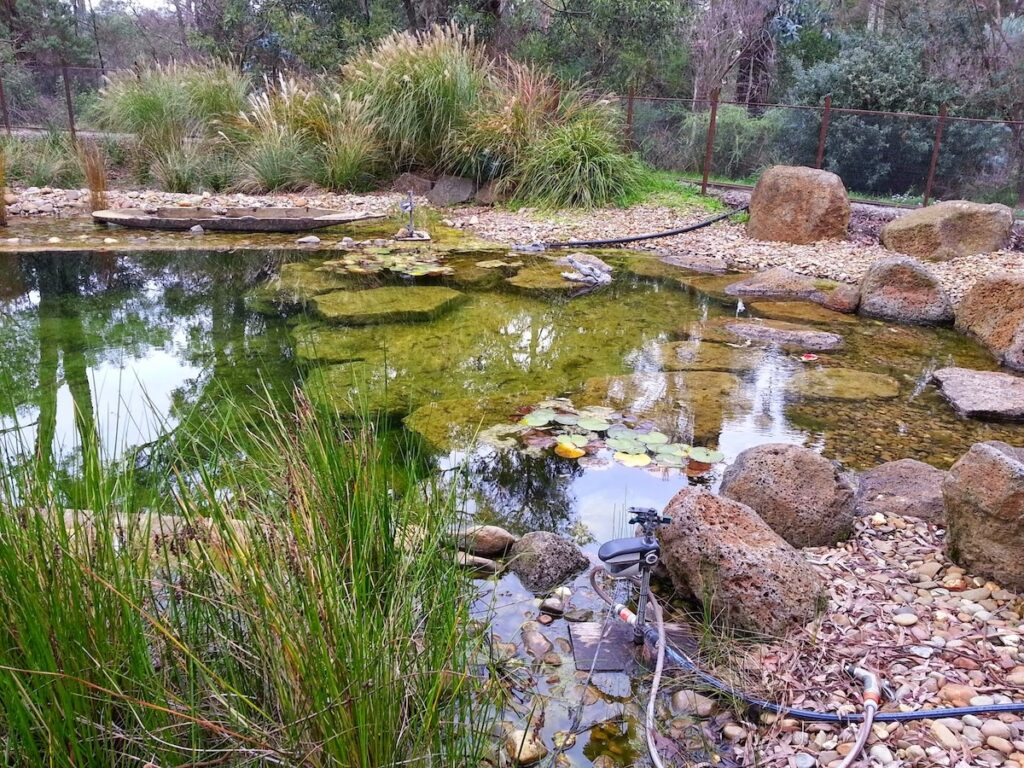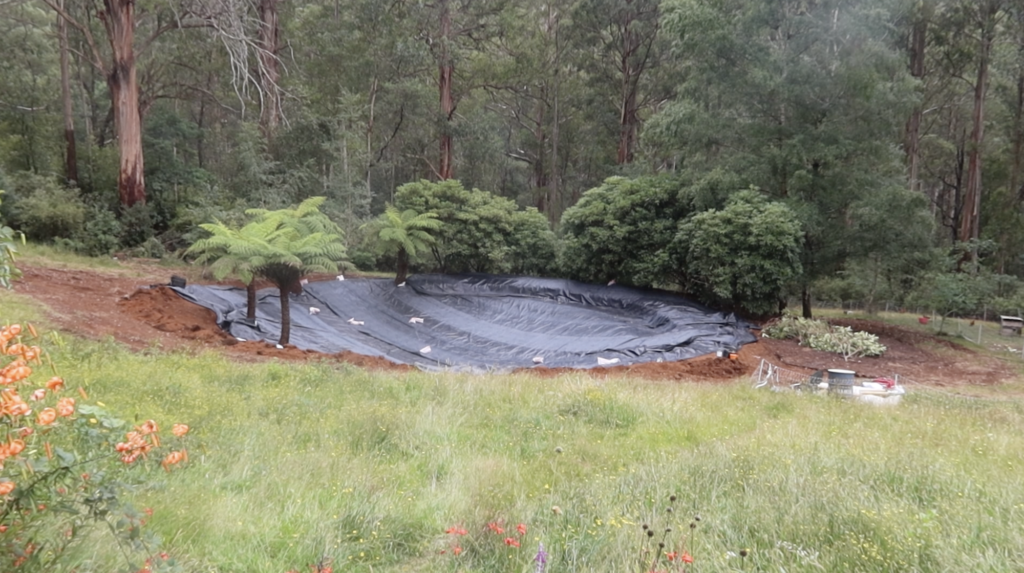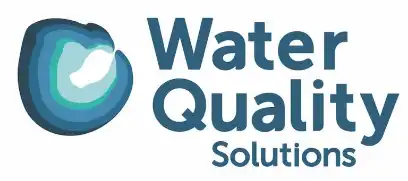High-grade, Spanish-made liner to leak-proof your dam

In 1969 Joan Palou started a waterproofing company in Díaz, Spain. Early in his entrepreneurial journey he met Michel De Knop, the Managing Director of Firestone’s European operations. This led to a thriving alliance and the first EPDM liner being installed in Spanish reservoirs in the 1970s. This liner, installed over 50 years ago, continues to hold its shape, quality and look to this day. Today, Rollgum is led by Joan Palou (son) who continues his father’s legacy, producing the highest quality EPDM liner from Rollgum’s manufacturing facilities in Barcelona, Spain.


Highlights




Sizes to choose from
Why choose Rollgum?
Lasts a lifetime
Backed by a 10 to 20 year guarantee, Rollgum's EPDM liner is the highest quality on the market. Made in Spain and estimated to last a lifetime, Rollgum liner can hold its look and form even decades on. And with UV-protection, the tough rubber doesn’t fade or deteriorate over time. So, it’ll continue to look great and remain exceptional quality through all those years to come.


Extreme weather resistant
With high-grade UV protection, Rollgum's EPDM liner holds its look and strength, even after decades of exposure to the harsh Aussie sun. The liner is designed to maintain its look and quality in extreme temperatures ranging from below -40ºC to +150 ºC. This is not the case with plastic liners which become brittle in the cold and stretch in the heat.
Super flexible, 400% stretch
Rollgum's EPDM liner offers unrivalled flexibility while remaining strong and durable. The elasticity of the rubber (up to 400% stretch) is retained even at temperatures below -40°C. This means you can easily manipulate the membrane to support all shapes and sizes of ponds and dams. You can also stretch and move the liner, even after decades of use.


Looks great in the wild
Rollgum's EPDM liner delivers a tidy, mat-finish appearance that looks great in the wild. The smooth, natural-ish look is the opposite to plastic liners that often fill with air pockets and have unsightly ridges where the plastic has gathered.
Safe for fish, livestock and swimmers
Rollgum's EPDM liner is made of rubber which is inert, meaning it doesn’t leach nasty chemicals into your water or surrounding environment. It also isn’t attacked by microbial organisms, a common occurrence in plastic which deteriorates the liner. This makes Rollgum EPDM liner an ideal choice for aquaculture fish farms, swimming holes, fishing dams, any water bodies used by people or animals.


EPD-certified for environmental sustainability
Rollgum’s EPDM liners are backed by an official Environmental Product Declaration (EPD), verified under the International EPD® System. This certification provides transparent, third-party data on the product’s environmental impact across its entire lifecycle. With Rollgum, you're choosing a high-performance liner backed by proven sustainability.
Easy to install
Rollgum liner comes in a single sheet which makes it easy to work with and adaptable to any dam size or shape. The high elasticity of the membrane (up to 400% stretch) makes the rubber liner easy to stretch and bend while remaining tough and durable. The liner is also easy to cut and join together with no machine or welding equipment required. You can use sealant glue or splicing tape and a roller to connect two membranes with ease.
EPDM liner accessories
Frequently Asked Questions
EPDM stands for Ethylene Propylene Diene Monomer, which is a type of synthetic rubber. It's widely used for pond/dam liners because it lasts decades, is resistant to UV rays, is puncture and tear resistant, is non-toxic (i.e., doesn’t leach nasty plastics), and is easy to install and repair.
Read this article to get precise instructions. If you’re lining a dam, you will want to dig the hole first, then use a tape measure or string to get the exact length and width, including an overhang (0.5-1m) on all sides.
If you are lining a pond, you can use these equations:
Length = overhang (0.4m) + depth + length + depth + overhang (0.4m)
E.g. 0.4 + 1 + 4.7 + 1 + 0.4m = 7.5m length
Width = overhang (0.4m) + depth + width + depth + overhang (0.4m)
E.g. 0.4 + 1 + 3.2 + 1 + 0.4m = 6m width
So, liner size = 7.5m x 6m
In most cases we recommend you use an underlay to protect your dam liner from damage caused by sharp rocks, roots and other potential puncture hazards. It is low cost and helps ensure the longevity of your liner.
Decades. In fact, it’s likely to outlast you. Rollgum liner is backed by a 10 to 20 year guarantee, but it can be expected to last much longer. The first EPDM liners were laid in Spanish reservoirs in the 1970s and they are still going strong.
Rollgum liner is made in Barcelona, Spain. It is manufactured with state-of-the-art equipment in the most modern production plant in the world, making it unrivalled in quality. Rollgum liners are also backed by an official Environmental Product Declaration (EPD), verified under the International EPD® System. This certification provides transparent, third-party data on the product’s environmental impact across its entire lifecycle.
We locally stock Rollgum liners in three thicknesses: 0.8mm, 1mm and 1.14mm, but we can custom order just about any thickness and size direct from Spain.
Our standard liner roll sizes are listed here. We can also custom order roll sizes. As mentioned above, regardless of the size of your liner, it will be sent on a 2.1m roll. The liner comes folded to fit on this 2.1m roll. This makes transport and handling cheaper and easier.
Rollgum liner comes in one colour only: black in a mat finish.
We recommend smooth liner over textured liner because of the structural integrity. If you have a 1mm thick smooth liner, you know it's 1mm thick across the entire surface. Whereas if you have a 1mm thick textured liner, it’s going to be significantly thinner at the base of all the dimples. Textured liner is more commonly used in roofing to reduce overall weight.
Yes, unlike plastic liners that leach nasty toxins into the water, EPDM liners are inert and non-toxic. It means it is safe for fish and other aquatic animals, livestock drinking, and swimmers.
Yes, it is safe for swimming in terms of being inert and non-toxic, although as mentioned above, it can be a bit slippery to walk on so it’s wise to excavate some steps at the entryways to swimming areas prior to lining your dam. This video shows what these stairs can look like.
Yes, your dog can swim in the water body as long as there is a layer of protection on top of the liner, e.g. sand or stones, so the claws don't contact the liner. EPDM liner is inert and non-toxic which makes it safe to swim in. If claws do cause damage, the good news is EPDM liner is easy to patch and repair.
Read this article for a comparison deep dive. Here is a quick summary:
Durability
EPDM vs. HDPE: HDPE is known to crack when the temperature changes from summer to winter, especially when it’s very hot and then extremely cold. But EPDM stays flexible and tough year-round.
EPDM vs. PVC: PVC tends to get brittle over time with sun exposure, but EPDM stays flexible and strong for decades.
Flexibility and Ease of Installation
EPDM vs. HDPE: HDPE needs complex welding to join sheets, and this is a labour-intensive process that tends to fail over time. However, Rollgum liners rely on adhesive seams or mechanical fastening. This is a much quicker and more reliable solution.
EPDM vs. PVC: During the installation process, PVC is stiff and not flexible, unlike EPDM that molds to any terrain without creasing or cracking.
Resistance to UV and Ozone Damage
EPDM vs. HDPE: Although HDPE provides some UV resistance, it can’t match the long-term durability of EPDM under direct sun exposure.
EPDM vs. PVC: PVC is very prone to UV damage and ozone exposure, while EPDM stays flexible, intact, and secure.
Environmentally Safe
EPDM vs. HDPE: While HDPE is recyclable, it needs more energy to manufacture and isn’t as stable in aquatic environments.
EPDM vs. PVC: PVC is known for being one of the more toxic plastics, especially when exposed to heat or disposed of incorrectly. EPDM completely avoids these risks.
Puncture Resistant
EPDM vs. HDPE: While HDPE may be strong, its rigidity makes it more susceptible to cracking on sharp or uneven surfaces, whereas EPDM offers greater flexibility.
EPDM vs. PVC: EPDM stays intact under pressure. But PVC’s brittleness makes it more vulnerable to tearing, particularly as it ages.
Because rubber costs more than plastic. Where EPDM becomes cheaper than plastic is over the life of the dam. Unlike EPDM which can last 50+ years, plastic liners will crack and perish over time and require replacement. This means not just replacing the liner itself but also the removal and installation costs. Not to mention cleaning up all that deteriorated plastic that splits into countless fragments when handled.
The weight depends on the liner thickness and surface area. 0.8mm = 0.95kg per ㎡. 1mm = 1.15kg per ㎡. 1.14mm = 1.4kg per ㎡.
Aside from being heavy, Rollgum’s EPDM liner is extremely easy to work with, making it adaptable to any dam size or shape, regardless of the complexity. The high elasticity of the membrane (400% stretch) makes the rubber liner easy to stretch and bend while remaining tough and durable. The liner is also easy to cut and join using Rollgum bonding adhesive, tape and sealants.
It depends on the size of the liner and location being shipped to, but EPDM is heavy and will arrive on pallets, so it’s likely going to be more expensive than Temu. One of the advantages with Rollgum, which helps keep shipping costs down, is all rolls are shipped on 2.1m wide rolls regardless of the width of liner. Wider rolls are folded to fit within the 2.1m roll. This is an advantage over other EPDM brands and HDPE liner which ship on different size rolls up to 6m in length which makes shipping very expensive. Fill in this form and we can provide you with an exact quote including shipping.
No. We can transport our liners using a courier that brings a tail lift truck. And because all rolls are shipped on 2.1m wide rolls (as explained above) the items are much easier to handle than many other suppliers. If you have a forklift and are delivering to a commercial business, it will cost less to transport. We can also send the liner to a depot in your nearest city, and you can pick it up yourself. This reduces transport costs considerably.
Yes, EPDM liner is used in more than just ponds/dams. It is used in roofing and gardening. You just want to make sure you don’t puncture it with garden tools.
Yes, you can. Here is an example. You just want to make sure you double or triple the layers of liner beneath big rocks. For instance, lay the underlay and your liner across the entire dam, then under the large rocks, add smaller sections of underlay and liner.
You shouldn’t need to unless your ground has a lot of sharp rocks, tree roots, or objects that might puncture the liner. If you first remove all sharp objects, then placing underlay alone beneath your liner is typically enough for protection.
You can if you want to. Some customers also design beach entrance sections and fill these areas with white beach sand to provide swimmers with a nice entry and swimming area.
The dam’s floor doesn’t need to be perfectly smooth or clean, but you do want to make sure you remove any sharp rocks, tree roots and objects that could risk tearing a hole in the liner. A smoother surface will also make it easier to prevent ripples in the liner when installing.
Read this article for step-by-step instructions. We also have a video showing the installation process.
Yes, we offer an installation service for customers near the Melbourne area. We can also travel for larger scale projects. If you are outside the Melbourne area and you don’t want to install the liner yourself, we can also put you in touch with a local installer.
Yes, you can. Read this article for step-by-step instructions. We also have a video showing the installation process. We also offer an installation service for customers in the Melbourne area, or we can put you in touch with a local installer.
Aside from a pair of good quality scissors to cut the liner, you will only need tools to join two pieces of liner together. To do this you will need a primer, joining tape, bonding adhesive, and a silicone roller. All of these products are available here.
For a pond installation, you will only need something to move the liner to the pond, e.g. a trolley or manpower. For a dam installation, you will need equipment to move the liner to site, e.g. bobcat, tractor, or excavator, and something to dig a perimeter anchoring trench around the dam to bury the edges of the liner in. We recommend you first watch this short video to see what’s involved so you can decide on whether you want to install it yourself.
The liner can easily be cut using a sharp blade or a pair of good quality scissors (upholstery scissors are ideal).
Yes, extremely. Rollgum liner can be stretched to 400%. This makes it very easy to handle and mold around objects and contours. To move it about, shake it up and down like you would a bed sheet to let the air under it.
Much like repairing a bike tyre puncture. Clean the liner surface, prime with Rollgum Primer and patch with Rollgum Form tape. You can use the Rollgum Roller to seal the tape. When properly applied, the patch produces a completely waterproof seam.
Yes, there's no problem walking on it during installation as long the substrate is smooth and you're using an underlay. Keep in mind the liner can be slippery once it has water covering it. If you are using the liner in a swimming dam, it’s a good idea to cut some stairs into the entryways prior to lining the dam. This video shows what these stairs can look like. Alternatively, you can create a gentle-sloping beach entry using sand or install rope or swimming pool ladder.
No. With high-grade UV protection, even exposed EPDM liner will hold its look and strength after decades of exposure to the harsh Aussie sun. The liner is designed to maintain its look and quality in extreme temperatures ranging from below -40ºC to +150 ºC.
No, not unless you haven’t joined the liner together properly. If you have sections on a seam that you are worried might leak, e.g. if there is a rippled section, we recommend using Rollgum Form Tape and a Rollgum Rubber Roller to double seal these areas.
It can be difficult for animals to get out of a lined dam because the surface is slippery. So, we recommend keeping livestock away, and if you have a lot of visiting wildlife, fence the dam off or design some escape routes. This can be stairs cut in near common entryways prior to lining your dam, installing a rope ladder, or better yet, designing an area with a gentle sloping bank where wildlife can escape. We recommend adding a layer of protection on top of the liner in this section though, e.g. sand or stones, so claws/hooves don't contact the liner. If an animal does cause damage, the good news is EPDM liner is easy to patch and repair.
"Since WQS installed the aerator, we've not had a single algae problem. In our smaller ponds that are too small for aerators we used Biostim pellets on their own and have noticed a huge reduction in algae.”
Andy Hart
“We had a nutrient-rich stormwater lake that was having continuous problems with algae. We were previously treating the nutrients with a liquid solution that would just end up getting flushed away with the outgoing water. Scott recommended we switch to Biostim pellets which were exactly what we needed.”
Giles Pickard
“Visiting ducks and our pet geese were continuously fouling the dam. WQS recommended a number of systems to improve the water quality. We are very happy with our final choice, the windmill aeration system. This combined with the Biostim pellets and liquid are cleaning up the dirty dam. Everything WQS said would happen has happened!”
Greg Lewis
“We had an urgent problem—our old irrigation system had blockages from weeds. Our dam was also riddled with black sludge. Scott recommended both aeration and biologicals and within six weeks the dam became so clear I could see to the bottom of it for the first time in years! I was chuffed that we could fix the issue without the use of chemicals.”
Michael Grant












